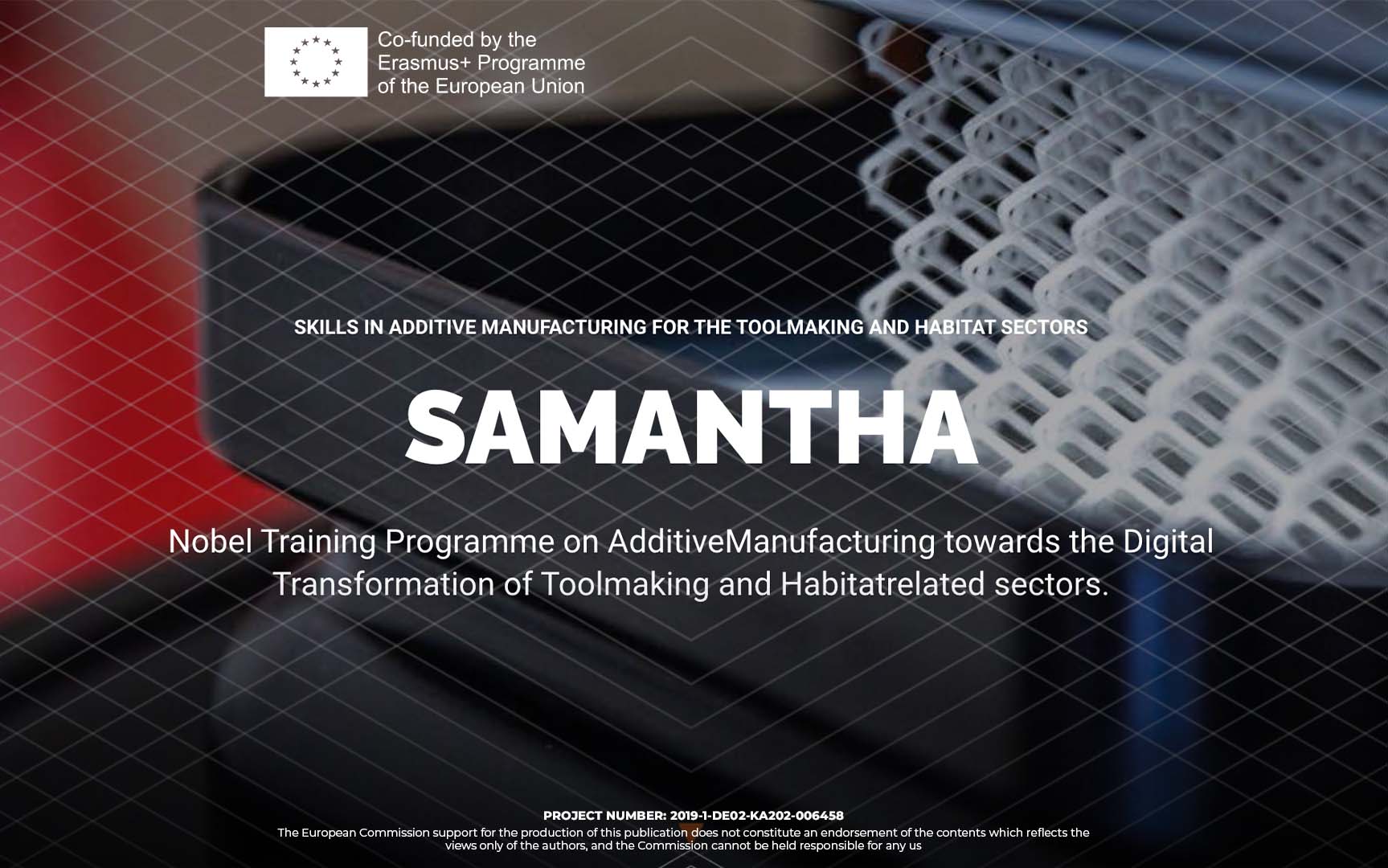SAMANTHA – Consortium effectively achieved the end of the project!
With the end of August, the SAMANTHA – SKILLS IN ADDITIVE MANUFACTURING FOR THE TOOLMAKING AND HABITAT SECTORS project was brought to the end, with the achievement of several and varied results.
SAMANTHA is a project that had as aims to develop a novel training program addressing the mismatched high-tech T-shaped skills for proper implementation of AM in the value chains of such sectors through high qualified workers. From this main objective there are several specific objectives and products to developed during the implementation of the project:
IO1- Create flexible learning pathways and didactic tools based on the learning outcomes approach, able to provide, assess and recognize the key competences identified in target groups.
Click here to download the report on the situation and evolution of Additive Manufacturing in the Toolmaking & Habitat sectors and related VET training offer: high-tech T-shaped skills and competences in different occupations (mismatches and needs).
IO2 – To ensure good alignment of VET programmes with the requirements of the Toolmaking industry and Habitat sector regarding AM.
Click here and find out the results of the report “Definition of training paths, modules, units and learning outcomes”, one of the first steps of IO2.
The SAMANTHA Curriculum was prepared bearing in mind the necessary areas of technical knowledge and transversal skills desired and needed in the Toolmaking industry and Habitat sector for a proper use of AM.
As a result, partners designed and developed the SAMANTHA high-tech- T-shaped Curriculum.
IO3 – To boost the Digital Transformation and the Smart Industrial Specialisation of these manufacturing sectors with a competent implementation of AM in their value chains.
During the pilot, at least 2 senior workers from each sector will mentor the participants who have already been selected (O3.A4.1) and will have already taken the course in the SAMANTHA Open platform.
With the aim of selecting the mentors, each partner interviewed senior experts/workers of the 2 sectors. In particular, the experts were identified based on the training needs and the lacks (knowledge, skills, competences… ) raised from the studies done in the O1 of the project.
The results of the interviews were used to define the profile model of the “senior mentor” in terms of needed technical and transversal knowledge and skills. With the defined profile model of the “senior mentor” the partners will be able to identify 2 mentors each, for a total amount of 16 mentors.
Do you have the required skills and competences to be considered as a mentor? Read the report!
IO4 – To increase competitiveness and productivity of these sectors with a continuous up/re-skilling of the workforce with the required high-tech T-shaped skills needed in the Fourth Industrial Revolution.
IO5 – To raise awareness and to improve the image of KETs and STEM graduates in society as a field to work in.
The purpose of the document “IO5/A1-2-3 Strategy roadmap for the Digital Transformation and Smart Specialization of the Toolmaking and Habitat sectors through VET education” is to present to the VET authorities the actions that the consortium considers as priorities for adopting the curriculum and the training course SAMANTHA: Additive Manufacturing for the Toolmaking and Habitat Sector
To keep track of the project and to take advantage from its results, please check the project web site.
